Envisioning Eco-Friendly Architecture in Paris
Paris City Hall commissioned Vincent Callebaut Architectures to design a series of environmentally beneficial buildings.

The 2007 Paris Climate Action Plan set a goal of reducing the city’s environmental footprint by 75% by 2050 (using 2004 as the base year), including greenhouse-gas emissions, energy consumption, and a move to renewable energy sources. Concurrently, Paris City Hall commissioned Vincent Callebaut Architectures to design a series of environmentally beneficial buildings. The idea of an environmentally sustainable city is not a new one (see the Danish Architecture Centre’s blog for frequently updated news items on this front), but Callebaut’s renderings, released last month and called Paris Smart City 2050, offer a totality helpful to a layperson’s understanding of green architecture; they visualize a restructuring of both Parisian energy consumption and the city’s architectural aesthetics.
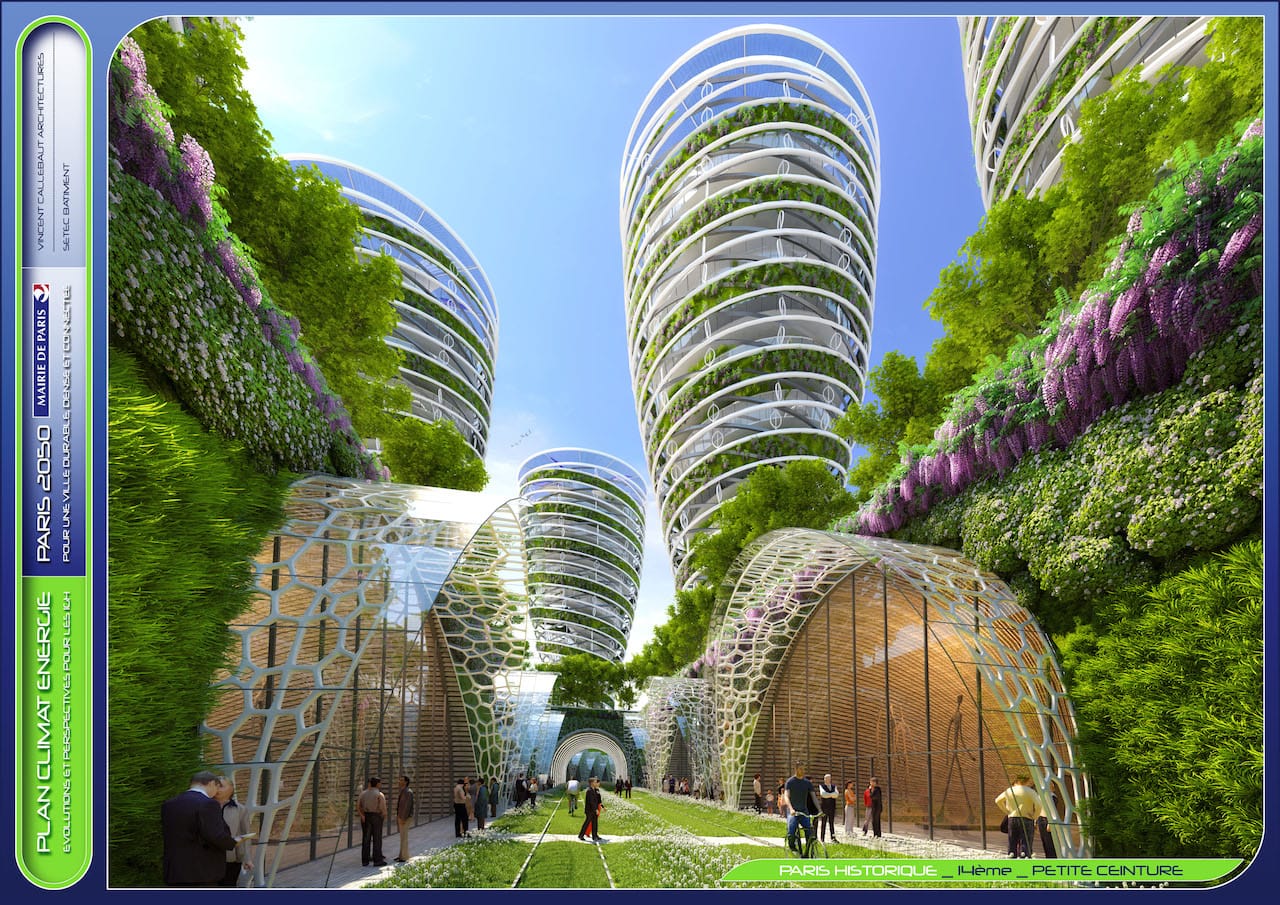
The plan for Paris Smart City 2050 proposes eight different types of towers. In brief: Mountain Towers, situated on the rue de Rivoli, uses solar power to create energy and purify water. The Antismog Towers repopulate old railroad tracks with greenery and housing whose energy needs are powered by wind. The Photosynthesis Towers repurpose a Montparnasse tower into a carbon-neutral vertical park. The Bamboo Nest Towers are an exoskeleton aimed at ecologically restructuring buildings in the Massena area. The Honeycomb Towers offer a model for affordable housing in which residents have vegetable gardens, hanging orchards, and solar power. The Farmscrapers Towers, are, as their name suggests, spaces for growing food. The Mangrove Towers aim to neutralize the ecological effects of the Gare du Nord train station, through which 700,000 travelers move each day; their photo-electrochemical skin and titanium-dioxide material can actually absorb and disintegrate smog molecules. Finally, the Bridge Towers offer new residential, business, and transit spaces that link different city districts.
Paris Smart City 2050 looks alluringly futuristic — and pleasant, so much greenery — but we’d be wise to remember that plans like these are but a small Band-Aid on the cancer of global warming (see the latest report of the New York City Panel on Climate Change). Nevertheless, the lifestyle, energy consumption, and structural changes rendered exciting in Paris Smart City 2050 are valuable, and ideally would be implemented right away. In this case the plan is simply a study, only the first step for a city government rethinking what new building initiatives with an ecologically friendly aim might look like.
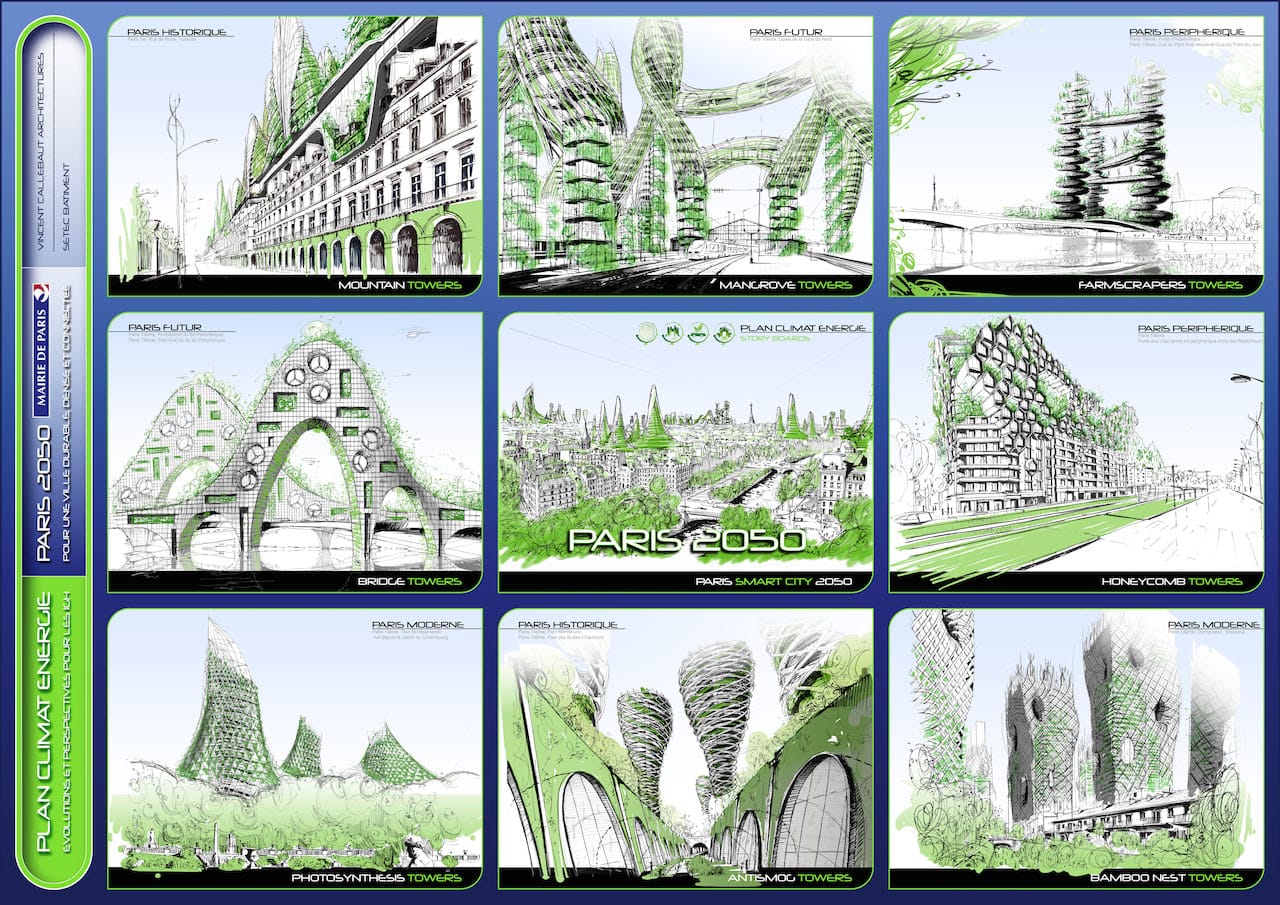
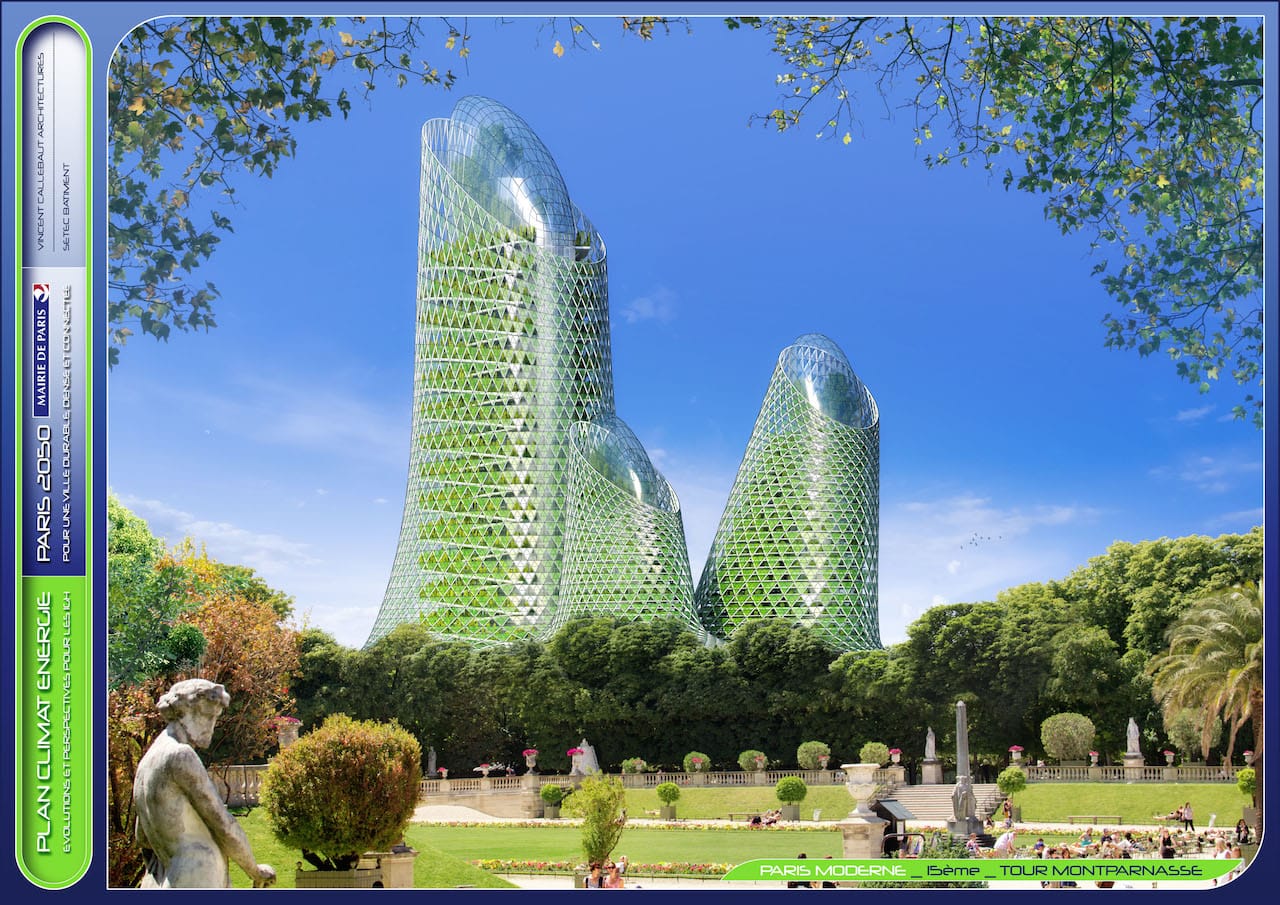
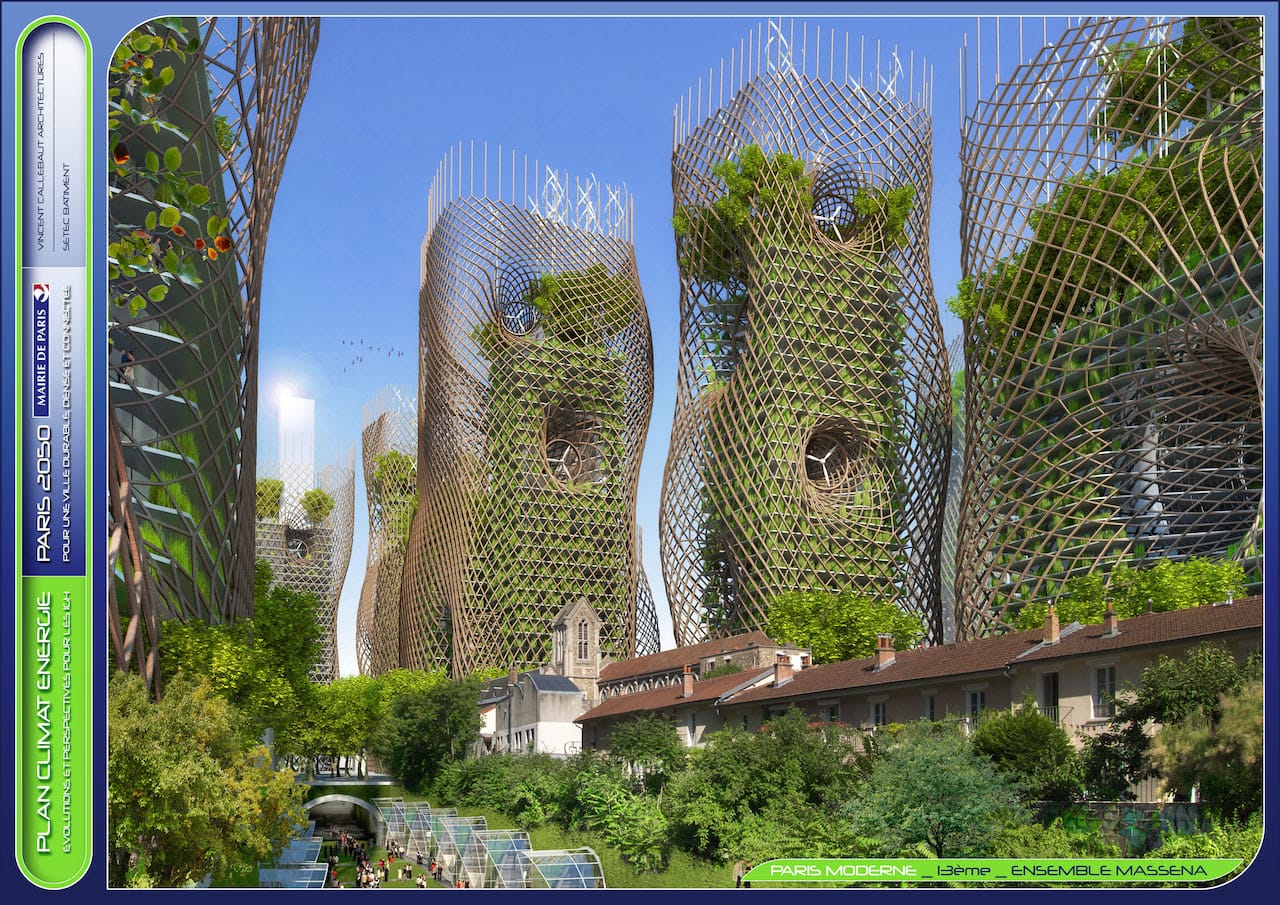
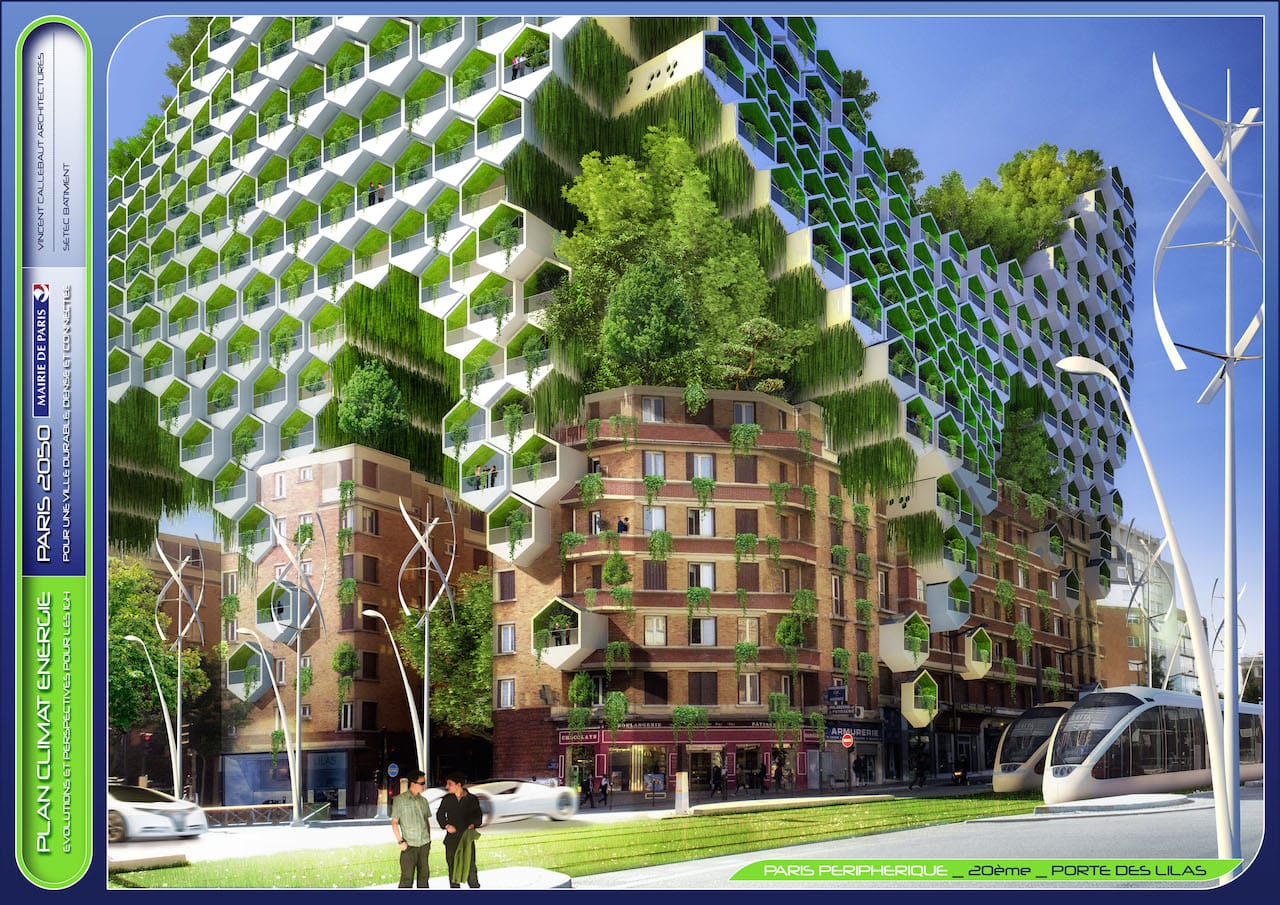

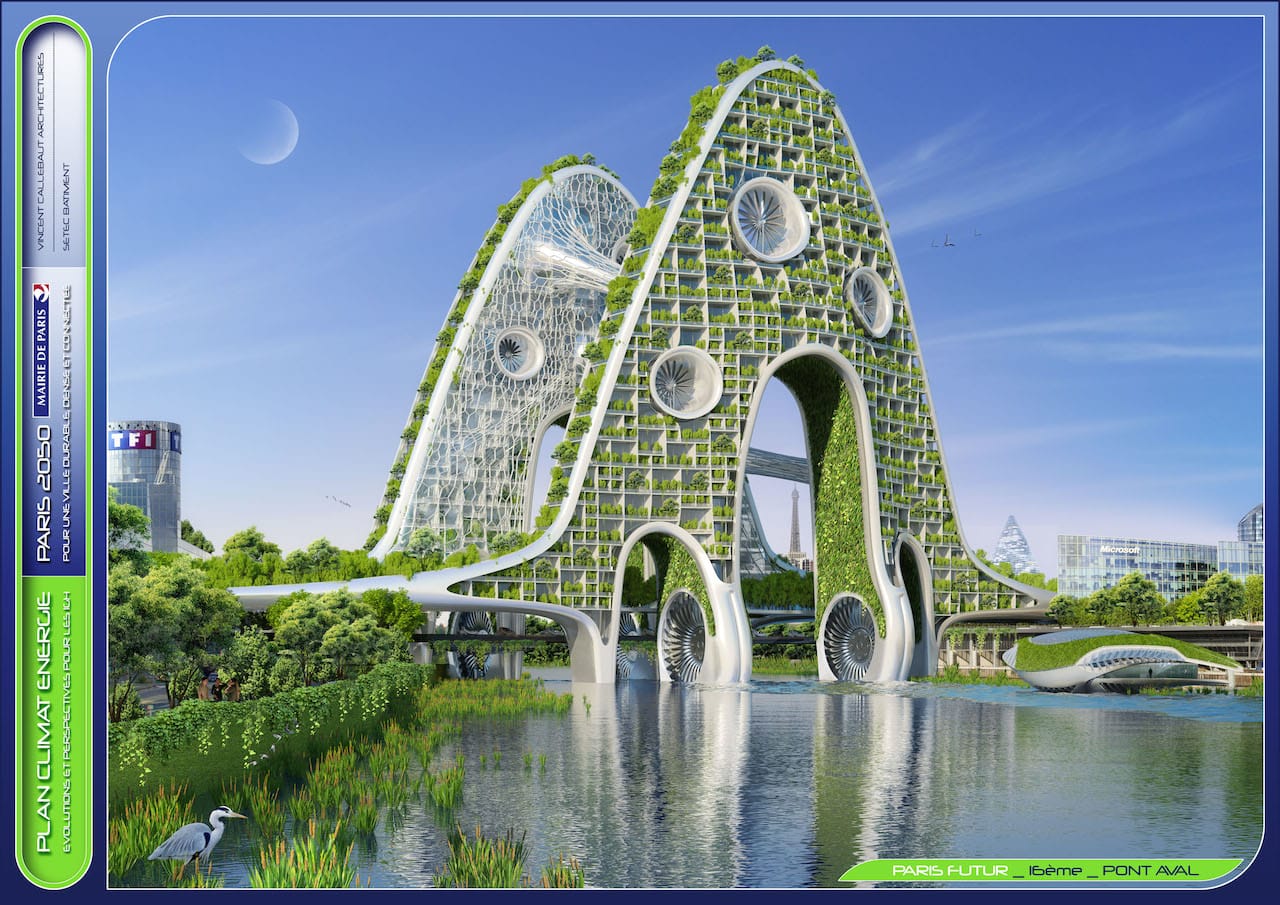


h/t ArchDaily




